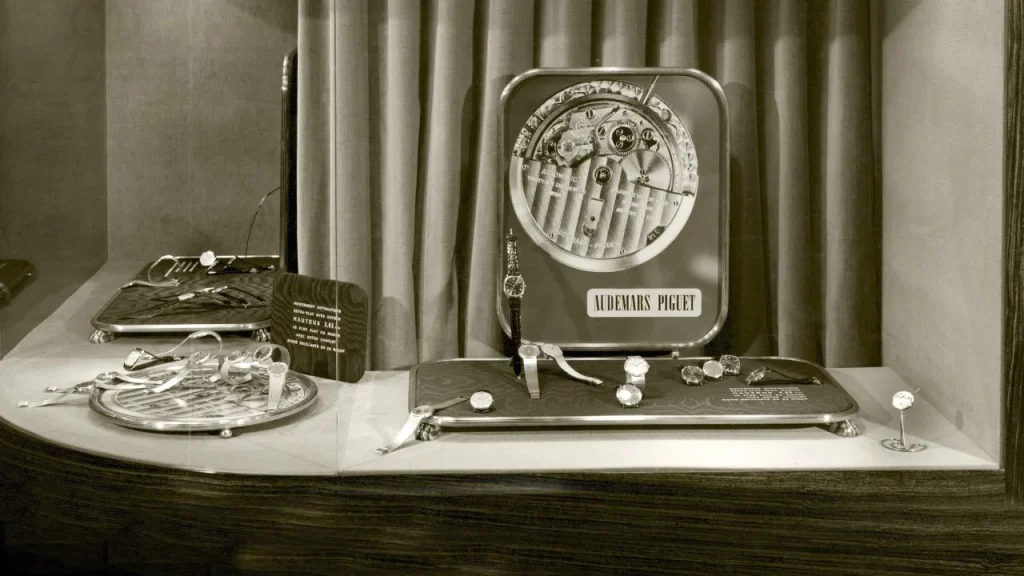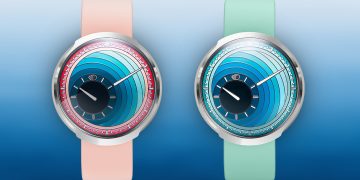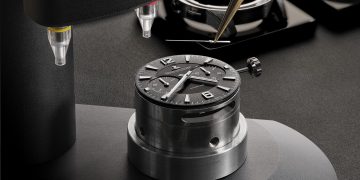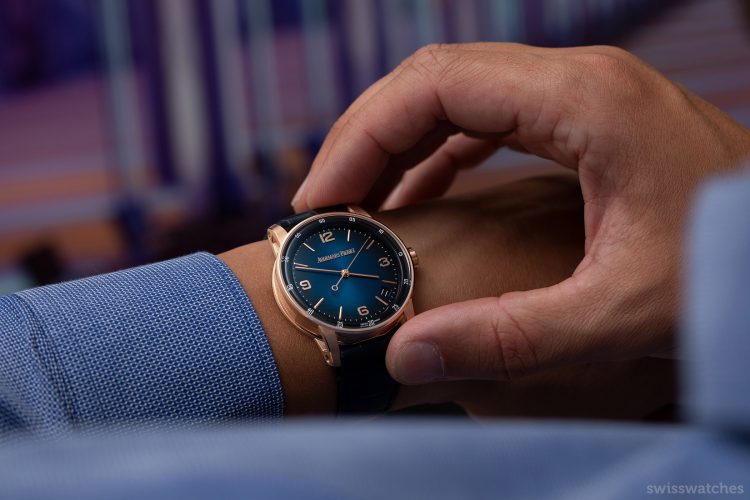In the world of luxury watches, Switzerland stands as the undisputed epicenter of horology. With its long tradition of craftsmanship, precision, and innovation, Swiss watchmaking has shaped the entire global industry. However, there is one small Swiss village that has become synonymous with cutting-edge watchmaking technology and modern innovations—the village of Le Brassus.
Le Brassus, a picturesque town nestled in the heart of the Vallée de Joux, might seem insignificant at first glance. Yet, this unassuming village has played a pivotal role in revolutionizing the watchmaking industry. Often dubbed the “Silicon Valley of Watchmaking,” Le Brassus is the birthplace of numerous breakthroughs in mechanical watchmaking, home to some of the most prestigious Swiss watch brands, and a cradle for the best talent in horology.
This article explores how this small Swiss village rose to prominence in the watchmaking world, the key innovations that emerged from its humble origins, and its profound influence on global watchmaking today.
The Origins of Le Brassus: A Quiet Village with a Legacy
The history of Le Brassus as a center for watchmaking can be traced back to the early 18th century. Nestled within the Jura Mountains in Switzerland’s Vaud canton, the village’s isolated location made it an unlikely candidate for becoming a hub of industry. However, the conditions in the region were ideal for the development of precision craftsmanship. The cold, crisp winters allowed for the production of high-quality watch movements, and the availability of water from nearby rivers provided the power necessary for early watchmaking machinery.
In the 18th century, watchmaking in Switzerland was still in its infancy. The Jura region, including Le Brassus, was populated by skilled artisans who specialized in creating intricate mechanical devices. However, it wasn’t until the founding of Audemars Piguet in 1875, by two young local watchmakers, Jules-Louis Audemars and Edward-Auguste Piguet, that Le Brassus truly began to establish itself as a key player in the watchmaking world.
Audemars Piguet, today one of the most renowned luxury watch brands in the world, would go on to shape the future of watchmaking from its headquarters in Le Brassus. This marked the beginning of the village’s transformation into a center of innovation.
Key Innovations and Breakthroughs: The Birthplace of Modern Watchmaking
Le Brassus has been the birthplace of countless revolutionary advancements in watchmaking. The village’s isolated location and tight-knit watchmaking community fostered an environment of creativity, where artisans were free to push the boundaries of traditional horology. Some of the most groundbreaking innovations in watchmaking were born from this village, establishing it as the beating heart of global watchmaking.
The Audemars Piguet Royal Oak
One of the most iconic timepieces in modern horology, the Audemars Piguet Royal Oak was born out of the visionary efforts of Gerald Genta in 1972. The Royal Oak revolutionized the watch industry by introducing a bold, unconventional design—a steel watch with a distinctive octagonal bezel and integrated bracelet. The watch’s launch challenged the very foundations of what a luxury timepiece could look like, and it became an overnight success.
The creation of the Royal Oak was a defining moment for Le Brassus, marking the beginning of its rise as a powerhouse of innovation and design. The watch broke away from the traditional ideals of Swiss watchmaking and opened the door to a new era of luxury timepieces that blended engineering precision with avant-garde design.
The Mechanical Chronograph Movement
Le Brassus is also home to some of the most significant achievements in mechanical chronograph movements. The Audemars Piguet watchmakers developed sophisticated chronograph mechanisms that were unparalleled in their complexity and precision. These innovations helped solidify the village’s reputation as a leader in the development of high-quality mechanical movements.
Chronographs, which allow the wearer to measure elapsed time, have been an essential part of modern watchmaking. The skill to produce these movements with the utmost accuracy became a hallmark of Le Brassus, and many of the world’s most prestigious watch brands sought to collaborate with or hire local watchmakers to incorporate these advancements into their own timepieces.

The Complication Tradition
Le Brassus is also known for producing some of the most intricate complications in the watchmaking world. A complication refers to any feature in a watch beyond basic timekeeping, such as moon phases, perpetual calendars, or minute repeaters. The tradition of creating complicated watches has been passed down through generations of watchmakers in the region, and Le Brassus continues to be a center for producing these horological marvels.
Audemars Piguet has been particularly renowned for its mastery of complicated watches, including the famous Grande Complication models that feature multiple complex functions, such as a minute repeater, chronograph, and perpetual calendar. These watches are a testament to the technical expertise and ingenuity that has flourished in Le Brassus over the years.
The Role of Le Brassus in the Quartz Crisis
In the 1970s and 1980s, the Swiss watchmaking industry faced an existential crisis due to the rise of quartz technology. The advent of cheap, battery-powered watches from Japan—led by brands like Seiko—posed a significant challenge to traditional Swiss mechanical watchmaking. As Swiss manufacturers struggled to adapt to the rapid rise of quartz, many of the larger brands were forced to re-evaluate their strategies.
Le Brassus, however, became an important exception to the rule. Rather than abandoning traditional mechanical watchmaking in favor of quartz, Audemars Piguet and other local watchmakers doubled down on their commitment to high-end mechanical timepieces. They focused on refining their movements, introducing even more complex complications, and pushing the boundaries of craftsmanship to maintain their relevance in the industry.
The village’s commitment to preserving traditional watchmaking methods during the Quartz Crisis helped it emerge from the period stronger than ever. Today, many of the brands associated with Le Brassus are considered the epitome of luxury and craftsmanship, partly due to their refusal to compromise on their heritage during this tumultuous time.
Le Brassus Today: The Silicon Valley of Watchmaking
Fast forward to the present, and Le Brassus has solidified its place as a key hub for the global watchmaking industry. Despite its small size, the village remains a powerhouse of innovation, design, and craftsmanship. Watchmakers from around the world are drawn to Le Brassus to learn from its legendary artisans and develop their own collections using the village’s renowned techniques.
A Thriving Community of Artisans
The success of Le Brassus in the modern era is largely due to the thriving community of watchmakers who continue to push the boundaries of horological engineering. Companies like Audemars Piguet and Richard Mille, both of which maintain a strong presence in Le Brassus, have invested heavily in preserving the village’s watchmaking heritage while also embracing cutting-edge technology. These brands have created state-of-the-art manufacturing facilities in the village, employing some of the most skilled watchmakers in the world.
Le Brassus has also become a major draw for watch enthusiasts and collectors. The village hosts events like the Watches & Wonders exhibition, where brands unveil their latest innovations and showcase the best of what Le Brassus has to offer. These events highlight the village’s status as the epicenter of luxury watchmaking, and they provide a glimpse into the future of the industry.
The Influence of Le Brassus on Global Watchmaking
The influence of Le Brassus extends far beyond the village itself. Watchmakers around the world look to Le Brassus for inspiration, as the village has set the standard for excellence in watchmaking. The innovations that originated in Le Brassus have had a ripple effect on the entire industry, shaping the future of timekeeping and mechanical engineering.
Moreover, the village’s deep-rooted commitment to tradition and craftsmanship has ensured that Swiss watchmaking remains synonymous with luxury, precision, and quality. Le Brassus continues to inspire new generations of watchmakers to honor the legacy of the great artisans who came before them while also encouraging innovation and experimentation.
Conclusion: The Enduring Legacy of Le Brassus
Le Brassus may be a small village, but its impact on the watchmaking industry is immeasurable. From the creation of iconic timepieces like the Royal Oak to the development of intricate chronograph movements and complications, the village has shaped the course of modern horology in profound ways. Today, Le Brassus stands as the Silicon Valley of watchmaking, where tradition and innovation coexist, and where the future of luxury timepieces is being written.
The village’s legacy serves as a reminder that even the smallest, most unlikely places can become centers of groundbreaking innovation and excellence. As long as there are watchmakers in Le Brassus, the future of Swiss horology will remain as bright as ever, with the village continuing to lead the charge in both tradition and innovation.





































